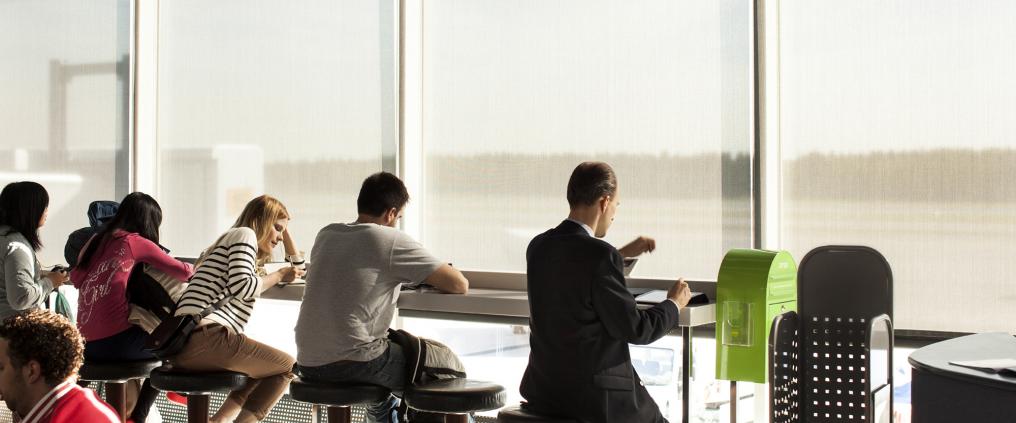The airport served as many new passengers during the year as there are inhabitants in a large town (670,000 passengers). Also domestic travel has seen a recovery.
A total of 19,691,593 passengers (19,005,003 in 2013) travelled through Finavia's airports in 2014, an increase of 3.6% compared to the previous year. 26% of the passengers took domestic flights and 74% international flights.
In the fourth quarter of 2014, the total number of passengers was 4,830,160 (4,639,194 in October–December 2013). The volume increased by 4.1% compared to October–December 2013.
International air travel continues to grow
The passenger volume in international air traffic increased by 3.7% in 2014, amounting to 14.6 million (14.1). The number of passengers on flights between Finland and continental Europe increased to 12.3 million (11.8) passengers. The number of passengers on flights between Finland and countries outside Europe amounted to 2.3 million (2.3).
The passenger volume at Helsinki Airport increased by 4.4% from 2013 to 15.9 (15.3) million at the end of December 2014. Compared to 2013, the volume increased by as many as 670,000 passengers. The volume of international passengers increased by 4.6%, and even domestic travel grew by 3.1%.
In October–December, 3.8 million passengers flew via Helsinki Airport. The increase was 4.9% compared to the same period in 2013
The number of transit passengers at Helsinki Airport increased by 5.3% from the previous year and was 2.5 million (2.4).
"Despite the economic slowdown in Asia, demand for air transport is growing. Helsinki Airport has further strengthened its position in the stiff competition amongst transit airports. We are preparing to serve our travellers ever better, and expect the volume of transit passengers to keep growing this year. Expansion of the airport, which started last year, aims at increased capacity as well as better passenger experience with improved services and more flexible processes," says Senior Vice President, Director of Airport Network, Sales and Marketing, Joni Sundelin of Finavia.
Majority of Asian transit passengers arrived at Helsinki Airport from South Korea, Japan, and China. Travel to the Middle East has also increased.
Domestic passenger volume also on the rise
In 2014, the domestic passenger volume increased by 3.1%, and the number of passengers was 5.0 million (4.9). In the fourth quarter, domestic passenger volume improved by 3.8% compared to the corresponding period in 2013.
"The downward development of domestic air traffic ended last year. On many routes demand was clearly growing, while some destinations continued to be unsuccessful. It seems like competition between different forms of travel will continue to tighten further this year. Flying is naturally at its strongest the longer the distance," Sundelin says.
At regional airports, passenger volumes increased the fastest in 2014 in Oulu 960,547 (877,080) and Rovaniemi 444,561 (427,367).
At airports in Lapland, (Ivalo, Enontekiö, Kemi-Tornio, Kuusamo, Rovaniemi and Kittilä) traffic has remained on the same level as last year.
Savonlinna and Lappeenranta were left without regular flight connections for part of the year, which is reflected in the air traffic statistics.
"It is possible to create additional demand for domestic flight routes among tourists. For instance, we should get transit passengers at Helsinki Airport to stop over in Finland. There is interest in Finland as a tourist country, but Finland would have to continue to strengthen its appeal by both developing and marketing competitive travel products. Finavia aims at promoting Finland at its airports, and the newly renovated arrivals hall at Helsinki Airport, or the terminals in Oulu and Kittilä serve as examples. Additionally, we are determined to continue our efforts of marketing our airports to airlines," Sundelin says.
More efficient air traffic
The number of commercial aviation landings continued to decrease to 115,263 operations last year, which is 1.5% less than in 2013. The passenger volume has not decreased in proportion to the number of landed aircraft, which means that air traffic is more efficient than before due to high aircraft occupancy rates and larger aircraft size.



